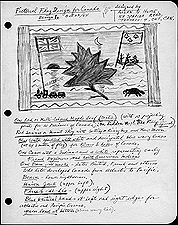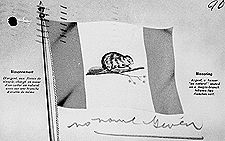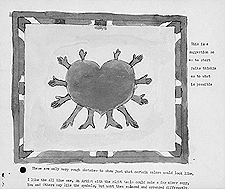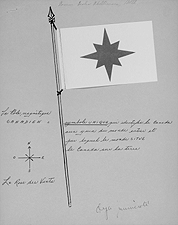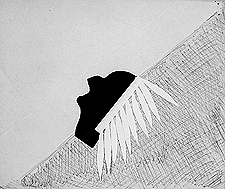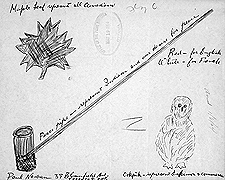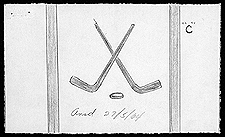|
|
|
History of the Canadian Flag |
|
Some thirty boxes of flag designs and related correspondence are found in the records of the Secretary of State at the National Archives. They consist of many extremely interesting ideas for a Canadian flag. Moreover, the letters explaining the significance of particular designs help to gauge the mood of ordinary Canadians during the time of the flag debate. The submissions range from crude drawings to truly artistic creations. Some designs religiously follow heraldic principles; others range from the ridiculous to the complex. On occasion, one is confused over how a particular design represents Canada. For example, one design has the pawnbrokers' symbols on it; another, a dollar sign; and a third, the skull and crossbones. Furthermore, a few designs include patriotic slogans that really have no place on flags. The most common
designs appear to be those containing a single maple leaf, those
featuring three or more maple leaves, those with the Red Ensign and /or
the Union Jack and those containing the fleur-de-lys.
Because of Canada's Christian heritage, a number of people wanted religious symbols, such as the cross, in the flag design. Some went further suggesting Jesus, St. Joseph, or the "Sacred Heart" be included. One rather bizzare design, which came from "Jacy of Chickadee Land," is described as: "Twelve praying, friendly, helpful hands all connected to one big blue heart and from it fed truth and love on a background of heavenly blue." Celestial objects,
usually represented by northern lights or by stars, were also popular.
Designs with horizontal or perpendicular bars, as well as stars on them,
often resemble the American flag.
This text was written by James M. Whalen and first published in The Archivist, Magazine of the National Archives of Canada, in 1990. |
|
| Source: National Archives of Canada | |
|
|
|
| Top Home |
